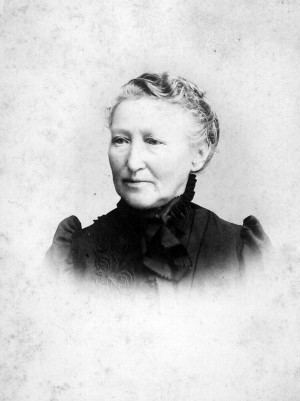Name Mary Treat | ||
 | ||
Occupation naturalist and botanistentomologistwriter Died April 11, 1923, Pembroke, New York, United States | ||
Mary Lua Adelia Davis Treat (7 September 1830 in Trumansburg, New York – 11 April 1923 in Pembroke, New York) was a naturalist and correspondent with Charles Darwin. Treat's contributions to both botany and entomology were extensive—four species of plants and animals were named after her, including an amaryllis, Zephyranthes treatae (now called Zephyranthes atamasca var. treatae), and an ant species (Aphaenogaster treatae).
Contents

Early life
Born Mary Davis to a middle-class family in Trumansburg, New York, she was mostly raised in Ohio, where she attended public and private girls' schools. Davis married Dr. Joseph Burrell Treat, an abolitionist and professor, in 1863; they lived in Iowa and in 1868 they moved to Vineland, New Jersey.
Career and research
After her move to New Jersey, Treat began her scientific studies in earnest, and collaborated with her husband on entomology articles and research. Treat’s first scientific article was a note published in The American Entomologist when she was 39 years old. Over 28 years she wrote 76 scientific and popular articles as well as five books. Her research quickly expanded from entomology to ornithology and botany, detailing bird and plant life in the southern New Jersey region. Following separation from her husband in 1874, Treat supported herself by publishing popular science articles for periodicals such as Harpers and Queen. Beginning in 1870, she published popular naturalist pieces in Garden and Forest, Hearth and Home, Harper's, and Lippincott's.
Her book, Injurious Insects of the Farm and Field, originally published in 1882, was reprinted five times. She also collected plants and insects for other researchers, one of whom was the eminent Harvard botanist Asa Gray. It was through Gray that she was introduced to Charles Darwin. Treat wrote letters to engage in botanical and entomological discourse not only with Darwin and Gray, but Auguste Forel and Gustav Mayr as well. She traveled to Florida several times between 1876 and 1878 to investigate insectivorous plants further. On one of these trips, she discovered the lily Zephyranthes treatae (named after her by Sereno Watson) and discovered that another lily was not extinct.
Collaboration with Charles Darwin
The first recorded correspondence between Treat and Darwin originates from 20 December 1871 in which Treat describes the fly-catching activities of Drosera, commonly known as sundew plants. Treat and Darwin’s recorded correspondence extends over five years around the period of time when Darwin was researching, and then publishing, on carnivorous plants. They predominantly discuss these plants in their correspondence (although not the only theme, they also discussed controlling sex in butterflies), and Treat openly critiqued Darwin’s hypotheses. One notable exchange concerned the bladderwort plant, Utricularia clandestina.
Darwin’s teacher and mentor at Cambridge, John Stevens Henslow, had a clear understanding of the morphology of Utricularia (bladderwort) plants, but was not able to understand working mechanics of their traps. Darwin incorrectly concluded that animals entered the traps by forcing their heads through the slit-like orifice with their heads serving as a wedge. In a letter to Treat he informed her that this subject drove him ‘half-mad’. Treat became deeply absorbed in this problem, researching intensively. Through long hours of observing the trapping sequence under her microscope she realised that the hairs around the entrance to the trap were sensitive and part of the process by which Utricularia traps opened, contributing new knowledge on the range of microscopic animal prey caught in these traps and the digestive processes they were subjected to. Treat described it as ‘these little bladders... in truth like so many stomachs, digesting and assimilating animal food’. Darwin was so impressed with Treat’s work on carnivorous plants that he referenced her, both within the main text and in footnotes, throughout his publication Insectivorous Plants (1875).
By making such public affirmations of Treat’s scientific work, Darwin legitimized her role as a scientist, though this is not completely uncontested among . Gianquitto’s opinion is, however, not reflected by all writers discussing Treat’s scientific identity’. With the advent of the Internet, Treat's correspondence with Darwin has been analyzed in more detail.
Legacy
The best archive of Treat's life is available at the Vineland Historical and Antiquarian Society. The Harvard University herbarium has a selection of Treat's specimens sent to Asa Gray and examples of their original correspondence. The Darwin Correspondence Project has summaries of her correspondence with Darwin, but as yet no full coverage of the contents of their letters to each other. The original letters are, in the main, available to view at Cambridge University Library. There has not been a definitive biography of Treat written.
Works
Treat's works mostly detailed her observations of insects and birds in a style accessible for young children and less-educated women.
